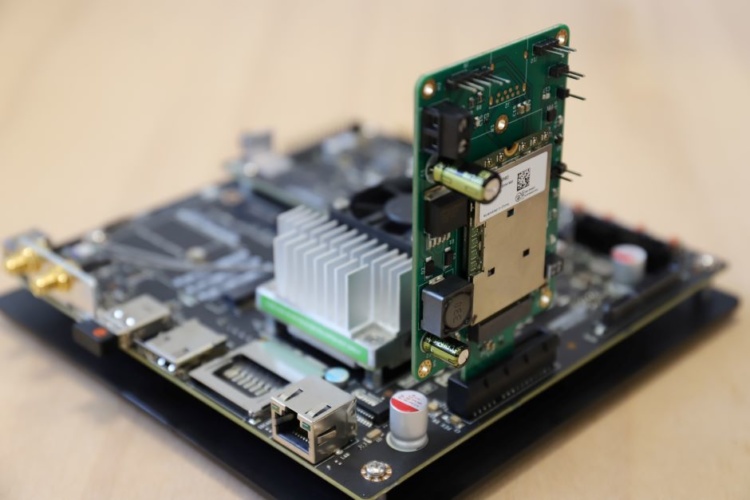
Dr Aparajithan Sivanathan, senior software engineer at AMRC North West, said the fully integrated sensor – dubbed Ventus – is unique to the manufacturing sector and can be connected to machines, sensors, robots, and building management systems.
Dr Sivanathan is project lead for the 5G Factory of the Future project, a £9.5m, two-year programme funded by the Department for Digital, Culture, Media and Sport (DCMS) and delivered by an industry consortium that includes BAE Systems, IBM, aql, MTT, Miralis, Digital Catapult, and is being led by AMRC North West, part of the High Value Manufacturing (HVM) Catapult.
Exploring the art of the possible in the 5G factory of the future
How 5G will build a more resilient manufacturing industry
5G Factory of the Future is an open-access industrial testbed that aims to find new and more efficient ways of manufacturing. The testbed will be based primarily at AMRC North West’s soon-to-be-completed £20m facility on the Samlesbury Aerospace Enterprise Zone in Lancashire.
Dr Sivanathan said a key part of the testbed is connecting every piece of equipment on a factory floor to a 5G network.
“This will bring the physical elements of a factory floor even closer to intelligent, computational units; essentially it will weave an invisible, cyber-physical fabric necessary to achieve the vision of Industry 4.0 and beyond,” he said in a statement. “Eventually, 5G is expected to become the de-facto connectivity standard for the manufacturing industry, enabled by its low latency, bandwidth and fine-grained controllability.
“There is a huge appetite for 5G connectivity in manufacturing, but a major piece missing from the puzzle is the limited availability of 5G devices connecting the machines, robots and sensors.
“5G is promising to deliver ultra-low latency, as low as five milliseconds, but there is currently very limited choice available to connect our industrial equipment to a 5G network. Existing devices are mostly consumer grade, limited to mobile phones, USB dongles or routers, and not suitable for industrial use. Furthermore, multiple devices need to be daisy chained to connect the industrial equipment to a 5G network - every device added to the chain introduces latency and that eventually jeopardises the original purpose.”
Zohaib Farhat, embedded systems engineer at AMRC North West, led the development of Ventus.
He said: “We talk about a ‘latency budget’, so for each device you bring into your connectivity pipeline you are adding at least a few milliseconds of latency. What we needed in order to achieve this ultra-low latency was our own terminal that could connect to our equipment and the 5G network directly; in effect, a native 5G device.
“Currently, the way other people are progressing this technology is to have a 5G customer-premises equipment (CPE) wired up to the robots, machines and computers to make a 5G network. Ventus is far more advanced than this because we have built 5G into the sensor, so it doesn’t need to be wired to anything else.”
The next stage of the project is to conduct testing on the Ventus native 5G sensor at AMRC North West. Dr Sivanathan said when the £20m facility is opened later this year, the nature of the 5G network means every new piece of equipment could be immediately 5G enabled.




Red Bull makes hydrogen fuel cell play with AVL
Formula 1 is an anachronistic anomaly where its only cutting edge is in engine development. The rules prohibit any real innovation and there would be...